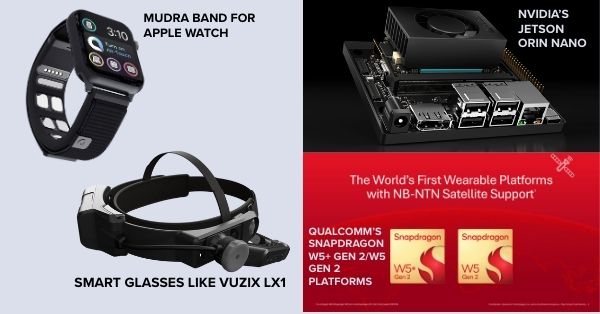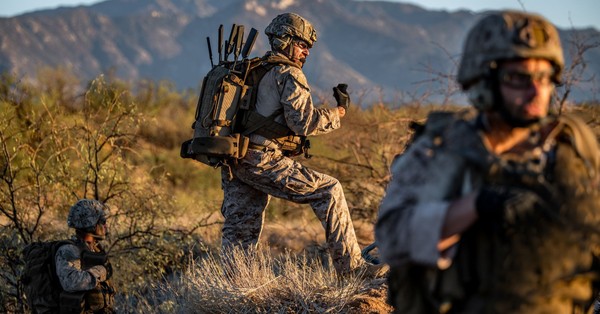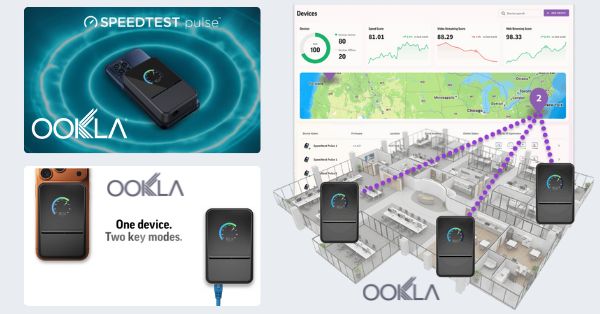Why AI-Powered, Touch-Free Wearables Are Rising
AI, neural input and new form factors are pushing wearables beyond screens and voice into more natural, hands-free interaction.
Market Momentum for Intuitive Interfaces
The global wearables market has more than doubled since 2021 and is entering a new cycle driven by AI-enabled, gesture-first devices. After a post-pandemic correction, volumes are stabilizing as value rises, helped by richer sensing, better compute and broader use cases. The next leg of growth centers on “intent-based” interaction—reading minute muscle or motion signals to control devices without touching a screen or speaking a command.
Beyond Touch and Voice: Neural Input
Extended reality and enterprise computing are adopting gesture and neural interfaces to cut friction and free up workers’ hands. Surface electromyography (sEMG) and neural input algorithms now detect subtle wrist and finger signals to move cursors, trigger apps and navigate spatial content. The appeal is clear: faster command throughput, fewer errors in noisy environments, and safer operation in motion or sterile settings.
Inside the Intuitive Touch-Free Wearables Tech Stack
Progress spans neural sensing on the wrist, low-power AI silicon at the edge, and ruggedized head-worn displays for frontline work.
Wrist-Based Neural Sensing (sEMG)
Wearable Devices Ltd. has commercialized neural input with two products: Mudra Band for Apple Watch and the cross-platform Mudra Link. Both interpret micro-gestures from the wrist, translating user intent into UI actions across phones, PCs and XR gear. In parallel, big tech labs are validating sEMG wristbands that aim to replace keyboards and mice, underscoring the category’s potential to become an OS-level input method for spatial computing.
On-Device AI and Connectivity for Wearables
Edge AI platforms such as NVIDIA’s Jetson Orin Nano are bringing transformer-class inference to palm-sized systems, enabling low-latency classification of biosignals and computer vision on the device. On the wrist, Qualcomm’s Snapdragon W5+ Gen 2/W5 Gen 2 platforms focus on power efficiency, tighter location services and new safety features. A notable addition is satellite support via Narrowband Non-Terrestrial Network (NB-NTN) with Skylo, enabling two-way emergency messaging from a wearable when terrestrial coverage is out of reach.
Wearable Form Factors: Glasses, Watches and Sensors
Smart glasses like Vuzix LX1 target warehouses and field operations with all-shift battery life and rugged design, manufactured with Quanta for scale and quality. Smartwatches remain the volume driver, layering ECG, SpO2 and sleep analytics with emerging AI coaching. Smart rings and lightweight eyewear are poised to expand the addressable base by adding discreet health tracking and glanceable information.
Enterprise Use Cases and Network Requirements
Hands-free operation, contextual AI and reliable connectivity are converging to deliver measurable gains in safety, productivity and training.
Warehousing, Logistics and Field Service Use Cases
Rugged smart glasses combined with neural input enable pick-by-vision, remote assist and documentation without controllers. Private 5G and Wi‑Fi 6/7 backhaul high-resolution video and digital twins to edge inference servers, while on-device AI handles gesture parsing and scene understanding. The result: fewer task interruptions, faster throughput and lower error rates on the floor.
Collaboration, Training and XR Workflows
Gesture-driven cursors and shortcuts reduce friction in presentations, design reviews and AR-guided training. Creator platforms such as Roblox are adding real-time translation and AI asset generation, accelerating development of branded or educational XR experiences that can be piloted on tablets today and migrated to glasses tomorrow.
Clinical, Accessibility and Sterile Settings
Touch-free control improves ergonomics and hygiene in clinical and lab settings, while advanced sensors expand remote monitoring. Neural input can also enhance accessibility, offering alternative controls for users with limited mobility—an area where cross-platform support is crucial for deployment at scale.
Key Players and Platforms to Watch
Leaders span input innovation, head-worn hardware, and the silicon and connectivity layers that make real-time AI practical.
Wearable Devices Ltd. (WLDS): Mudra Input
With Mudra Band and cross-platform Mudra Link already in-market, WLDS holds a first-mover advantage in neural input. Its focus on broad OS support and practical mapping tools (media control, D-pad, cursor, custom gestures) makes integration easier for enterprises running mixed fleets of iOS, Android, Windows and macOS devices as well as AR headsets.
Ecosystem Shapers: Apple and Meta
Patent activity around gesture recognition and spatial computing from Apple, plus Meta’s wrist-based sEMG research, signal OS-level pathways for touch-free input. As spatial operating systems mature, expect native APIs for neural and gesture controls that standardize developer access and reduce integration cost.
Edge AI and Connectivity Enablers: NVIDIA, Qualcomm, Vuzix
NVIDIA provides the edge AI horsepower for generative and multimodal workloads in compact systems. Qualcomm’s wearable platforms improve battery life and add satellite messaging via NB-NTN with Skylo, extending reach and safety. Vuzix, with manufacturing partner Quanta, is aligning glasses design to enterprise duty cycles—critical for scale deployments.
Constraints, Risks and Actions for Operators
Success depends on balancing power, latency, privacy and interoperability across dense RF environments and heterogeneous devices.
Key Constraints: Battery, Latency, RF and Privacy
Battery life remains the gating factor for glasses and neural bands, especially with always-on sensing. Latency is sensitive in gesture input; deployments should pair on-device AI with edge nodes for sub-50 ms response. RF coexistence across Wi‑Fi, Bluetooth LE, UWB and 5G requires careful channel planning. Privacy is paramount: biosignals are biometric data and must be secured end to end. Finally, avoid implied medical claims unless features are validated and cleared in target markets.
Operator and Enterprise Action Plan
Pilot gesture and neural input in two workflows with clear KPIs (task time, error rate, safety incidents). Validate coverage maps for private 5G/Wi‑Fi 6E/7 in high-interference zones and test satellite fallback for lone workers. Build an edge AI toolchain for on-device and near-edge inference, and require cross-platform device support to avoid ecosystem lock-in. Update security baselines to include biosignal encryption, local processing by default and role-based access to analytics. Partner early with hardware providers for accessory fit, charging, and device management integration.
12–24 Month Outlook and Signals to Track
Watch for platform-level APIs, satellite-enabled wearables and enterprise reference designs that turn pilots into scaled programs.
Next Signals to Watch
Three catalysts stand out: 1) OS-native gesture/neural APIs from major platforms; 2) general availability of satellite messaging on mainstream wearables; and 3) second-generation enterprise smart glasses with lighter frames and full-shift batteries. If these align with improved edge AI efficiency and falling BOM costs, touch-free wearables will move from niche to standard in frontline and spatial computing workflows.









































